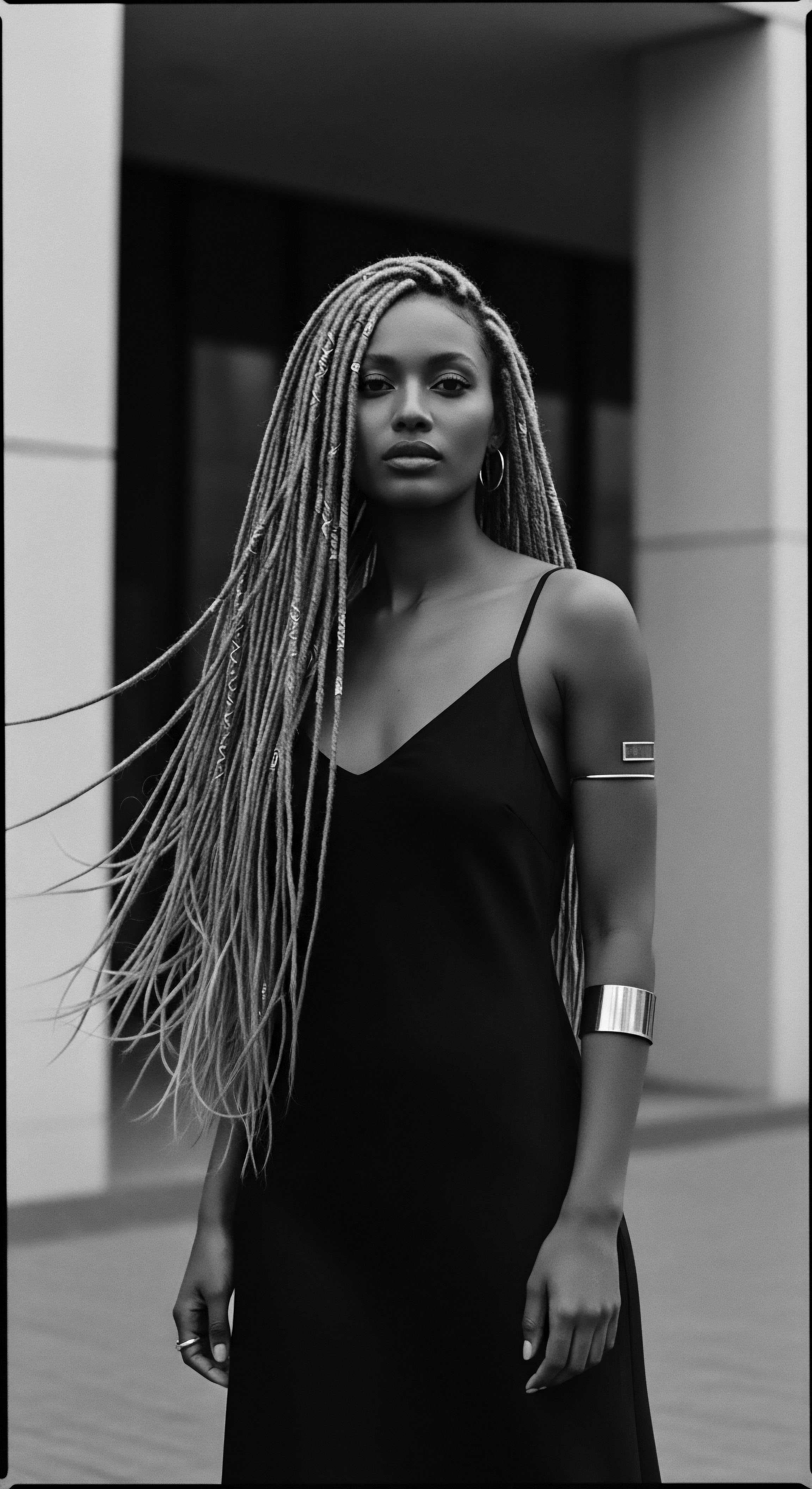
Roots
To journey into the heart of textured hair is to trace a lineage, a vibrant narrative etched in every coil, curl, and kink. For generations untold, across continents and through the crucible of time, ancestral oils have stood as sentinels of sustenance and shield for these precious strands. They are not simply emollients; they are fluid histories, whispers of traditional ingenuity, and tangible connections to a past where hair was, and remains, a sacred crown. The deep hydration and environmental defense offered by these oils speak to an ancient understanding, a wisdom passed down not through textbooks, but through the gentle, knowing hands of kin.
Consider the subtle architecture of textured hair, often characterized by its elliptical cross-section and unique cuticle patterns. These distinctions, while celebrated for their intrinsic beauty, also create pathways for moisture loss and vulnerabilities to external aggressors. The cuticle, the outermost protective layer of the hair shaft, with its overlapping scales, can lift and become compromised by factors in the surrounding world.
Wind, cold, excessive humidity, and the pervasive presence of airborne pollutants, including particulate matter (PM) and polycyclic aromatic hydrocarbons (PAHs), can lead to dryness, roughness, and a dull appearance. Ultraviolet (UV) radiation from the sun poses another formidable challenge, breaking down keratin proteins and stripping hair of its vital natural oils.
Our ancestors, through keen observation and lived experience, discerned these challenges without the aid of modern microscopes or chemical analyses. Their responses were not accidental; they were carefully calibrated solutions, relying on the gifts of their immediate environments. The oils they selected, often through trial and error over centuries, offered more than superficial gloss.
They provided a substantive barrier, a lipidic embrace that addressed the specific needs of hair exposed to sun-drenched landscapes, arid winds, or the rigors of daily life. These traditional selections speak to an innate understanding of natural science, a practical ethnobotany that predates formal academic study.
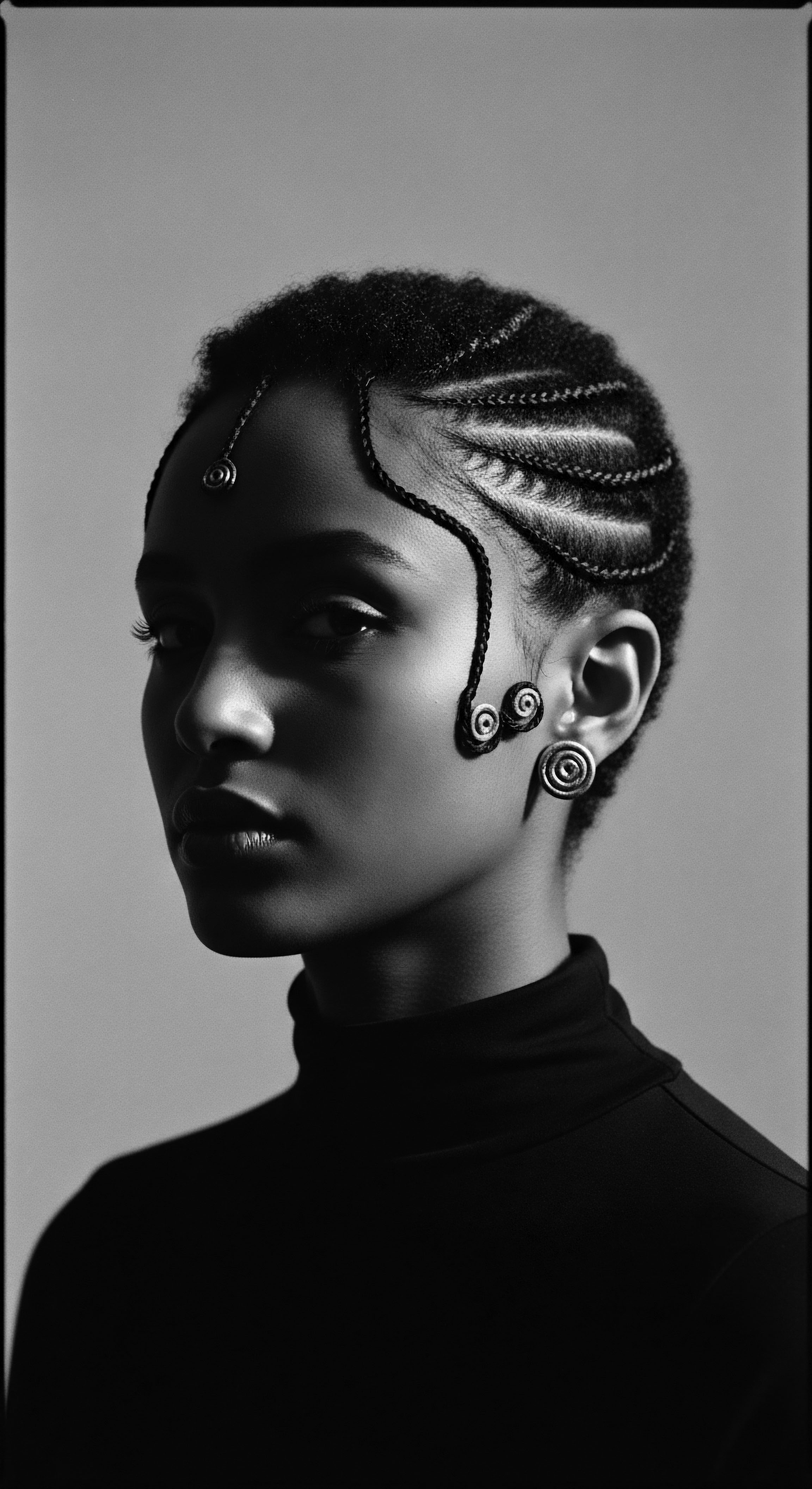
What Components Within Textured Hair Make Ancestral Oils So Significant?
Textured hair, with its inherent coil and curl patterns, possesses a unique morphology that influences its hydration and vulnerability. The hair shaft, comprising the Cuticle, Cortex, and Medulla, exhibits specific characteristics. The cuticle, the protective outer layer, may have more lifted scales compared to straighter hair types, creating more avenues for moisture to escape.
This structural reality means that textured hair often battles a predisposition to dryness, necessitating external hydration and moisture-sealing agents. The ancestral oils, often rich in fatty acids and occlusive properties, served precisely this purpose, laying a physical barrier that aided in retaining internal water and nutrients.
Beyond mere structure, the very path of a textured strand—its twists and turns—means that natural oils produced by the scalp, known as sebum, struggle to travel down the entire length of the hair, leaving the ends particularly susceptible to dryness. This natural phenomenon amplifies the need for external lipid application, a need that ancestral societies met with a profound array of plant-based oils and butters. The scientific understanding of hair porosity also sheds light on this ❉ high-porosity hair, common among textured strands, allows moisture to enter easily but also escape quickly, making occlusive ingredients vital.

Tracing the Source of Historical Hair Nourishment
The journey of ancestral oils for hair care began with the observation of natural botanicals and their properties. Across diverse regions, communities discovered and refined their use of local flora to protect and maintain hair. This wasn’t a universal formula but a regionally adapted wisdom, each locale offering its own unique contributions to the collective knowledge of hair maintenance.
- Shea Butter (Vitellaria paradoxa) ❉ Originating from West and Central Africa, shea butter has been a cornerstone of hair care for centuries. Its dense composition, rich in fatty acids like oleic and stearic acids, provides deep moisture and forms a protective barrier on the hair shaft, shielding it from environmental assault. This rich butter also offers anti-inflammatory benefits, soothing the scalp.
- Coconut Oil (Cocos nucifera) ❉ Prevalent in South Asia, Africa, and the Caribbean, coconut oil’s ability to penetrate the hair shaft and reduce protein loss is well-documented. It provides a protective layer and offers some defense against UV radiation, a benefit recognized by modern science. Its widespread presence in tropical and subtropical zones made it a readily available and highly effective hair treatment.
- Castor Oil (Ricinus communis) ❉ Utilized extensively in ancient Egypt, Africa, and the Caribbean, castor oil’s thick, viscous nature makes it an exceptional occlusive. It locks in moisture and smooths the hair cuticle, offering protection from harsh climates and aiding in length retention. The ancient Egyptians, for example, used castor oil to strengthen hair and promote growth.
- Olive Oil (Olea europaea) ❉ A staple in Mediterranean and Middle Eastern cultures, olive oil was valued for its emollient properties, sealing the cuticle to retain moisture. Ancient Greeks and Romans incorporated it into their hair rituals, often infused with herbs, for softness and shine.
- Moringa Oil (Moringa oleifera) ❉ From regions like India and Africa, moringa oil, derived from the “miracle tree,” is celebrated for its conditioning and purifying qualities. While less commonly cited for UV protection than some other oils, its nutritional density speaks to its capacity for fortifying strands against general environmental wear.
Ancestral oils stand as living archives, each drop holding the wisdom of generations who understood hair as a reflection of community and a vessel of identity.
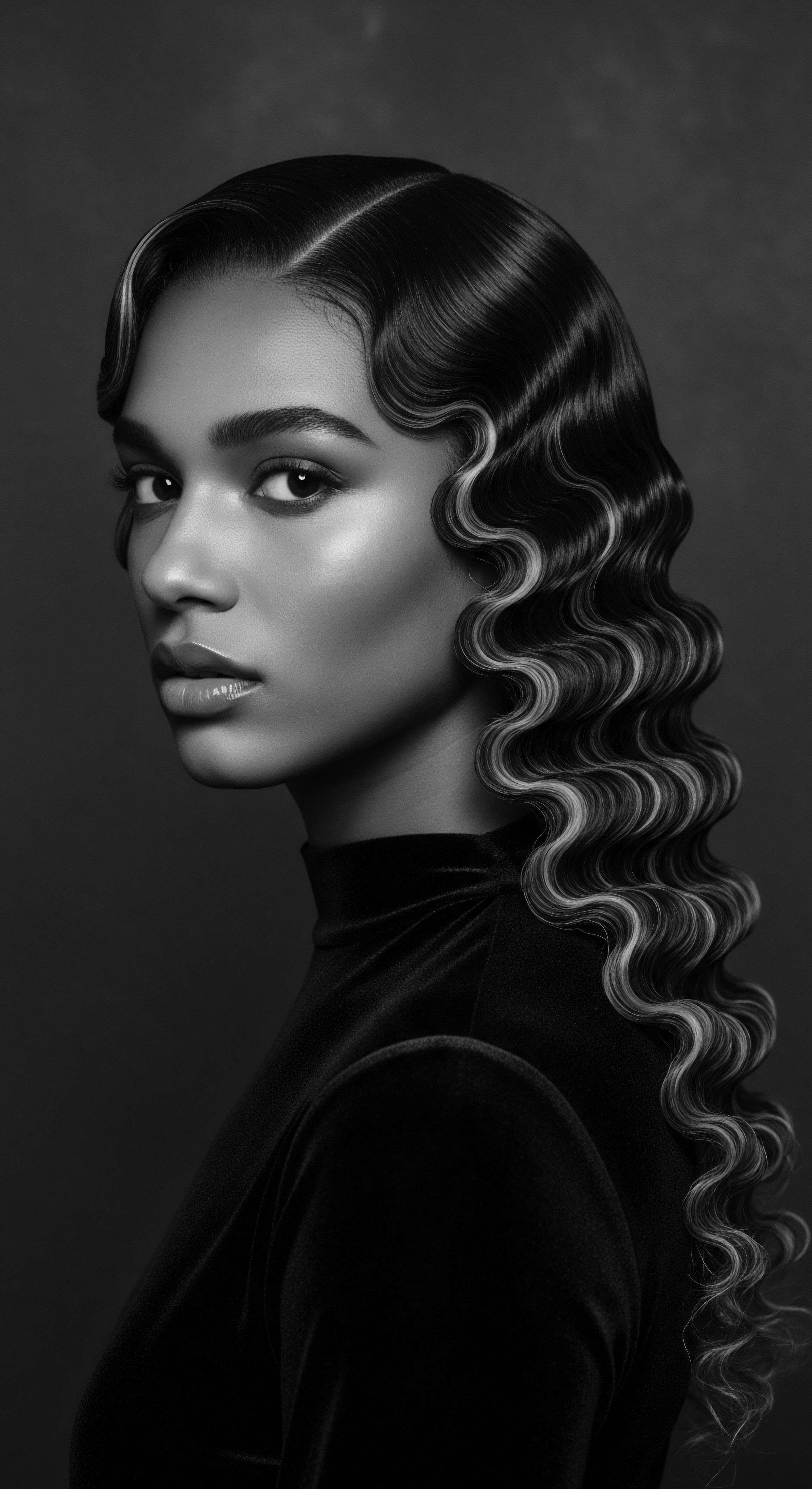
Ritual
The practice of applying ancestral oils to textured hair transcends mere application; it is a ritual, a deliberate act steeped in attentiveness, care, and a profound connection to lineage. These traditions, passed silently from elder to youth, from mother to child, speak to a knowledge that stretches beyond written records, a wisdom ingrained in the very movements of hands working through coils. The oils, in this context, become active participants in the preservation of heritage, a tender thread connecting past and present.
Across various Black and mixed-race experiences, hair care rituals have been a quiet yet potent form of resistance and self-determination. During periods of subjugation, such as the transatlantic slave trade, where efforts were made to strip enslaved Africans of their cultural markers, the act of tending to hair, even with limited resources, became a clandestine act of self-preservation. Though their traditional tools and natural ingredients were often unavailable, ingenuity led to the use of accessible substitutes like bacon grease or butter, demonstrating an unwavering commitment to hair health and cultural continuity.
This historical reality underscores the deep-seated significance of hair care as a means of maintaining identity and dignity amidst profound adversity. The very survival of certain braiding styles, passed down through generations, often concealed seeds or escape routes, turning hair into a silent testament to resilience and strategic thinking.

How Did Historical Styling Techniques Integrate Ancestral Oils?
Traditional styling practices for textured hair, often centered on protective styles, relied heavily on ancestral oils for their efficacy and longevity. Braids, twists, and cornrows, ancient and enduring styles across African communities, reduce daily manipulation and shield hair from environmental exposure. Oils like shea butter and coconut oil were not simply post-styling additions; they were integral to the process. They lubricated the strands, making them more pliable for braiding, and then sealed the finished style, locking in moisture and providing a physical barrier against dust, wind, and sun.
The Chebe tradition of the Basara Tribe in Chad stands as a compelling case study. For generations, Basara women have applied a mixture that includes Chebe powder (a blend of indigenous herbs) infused with raw oils and animal fat to their hair weekly, braiding it to maintain extreme length retention. This practice highlights a sophisticated understanding of how occlusive properties of oils, combined with herbal fortifiers and protective styling, create an environment conducive to hair health and growth even in harsh, arid climates. The sustained length achieved by Basara women, despite environmental challenges, offers a powerful testament to the effectiveness of these ancestral methods.
Beyond protective styles, simpler forms of oil application were common. Scalp massages, often performed with warm oils such as coconut oil , almond oil , or jojoba oil , were (and still are) a common ritual across many indigenous cultures, including those in India and Africa. These massages stimulated blood circulation to the scalp, promoting a healthy environment for hair growth and ensuring nutrients reached the hair follicles. The oil itself provided a layer of protection, reducing friction during detangling and acting as a physical shield against pollutants and UV rays.
| Ancestral Oil Shea Butter |
| Traditional Use for Textured Hair Deep conditioning, sealing moisture, environmental barrier, scalp soothing in arid climates. |
| Modern Scientific Link for Protection/Hydration Rich in fatty acids (oleic, stearic), provides occlusive barrier, reduces transepidermal water loss, offers anti-inflammatory properties. |
| Ancestral Oil Coconut Oil |
| Traditional Use for Textured Hair Moisture retention, strengthening, pre-wash treatment to prevent water logging, shine. |
| Modern Scientific Link for Protection/Hydration Low molecular weight allows cuticle penetration, reduces protein loss, provides some UV protection (SPF 8). |
| Ancestral Oil Castor Oil |
| Traditional Use for Textured Hair Promotes length retention, thickens hair, seals ends, used for hair growth and strength in ancient Egypt. |
| Modern Scientific Link for Protection/Hydration High ricinoleic acid content creates a thick, occlusive film, sealing moisture and smoothing the cuticle. |
| Ancestral Oil Olive Oil |
| Traditional Use for Textured Hair Emollient, adds shine, detangling, protecting against sun. |
| Modern Scientific Link for Protection/Hydration Squalene and fatty acids offer emollient properties and create a surface film. Hydroxytyrosol (in extra virgin oil) offers UVB protection. |
| Ancestral Oil Jojoba Oil |
| Traditional Use for Textured Hair Scalp balance, moisturizing, mimics natural sebum. |
| Modern Scientific Link for Protection/Hydration A liquid wax ester, chemically similar to human sebum, balances scalp oil production, provides mild barrier. |
| Ancestral Oil These oils, long held in esteem within textured hair heritage, illustrate a timeless bridge between ancestral practice and scientific understanding. |

The Cultural Significance of Preparation and Application
The preparation of these oils was often a communal endeavor, a generational transfer of knowledge that reinforced familial and community bonds. Women would gather to extract shea butter from nuts, for example, a labor-intensive process that resulted in a prized ingredient. This collective effort instilled a sense of shared purpose and reverence for the materials.
The application itself was rarely a solitary act; it was a time for storytelling, for sharing wisdom, and for reinforcing cultural identity. The hair became a canvas, a visual language conveying age, marital status, social standing, or tribal affiliation, and the oils used in its care were integral to these statements.
This communal aspect of hair care, still practiced today in many parts of the world, speaks to the social fabric woven around textured hair. It highlights that the act of applying oils was not just about physical care, but about nurturing relationships and preserving a collective heritage. The ritual itself, the rhythmic massage, the careful sectioning of hair for braiding, the sharing of recipes for herbal infusions, all served to solidify cultural continuity.
Hair oiling, more than a routine, has always been a communal practice, binding generations through touch, story, and shared wisdom of ancestral plant gifts.
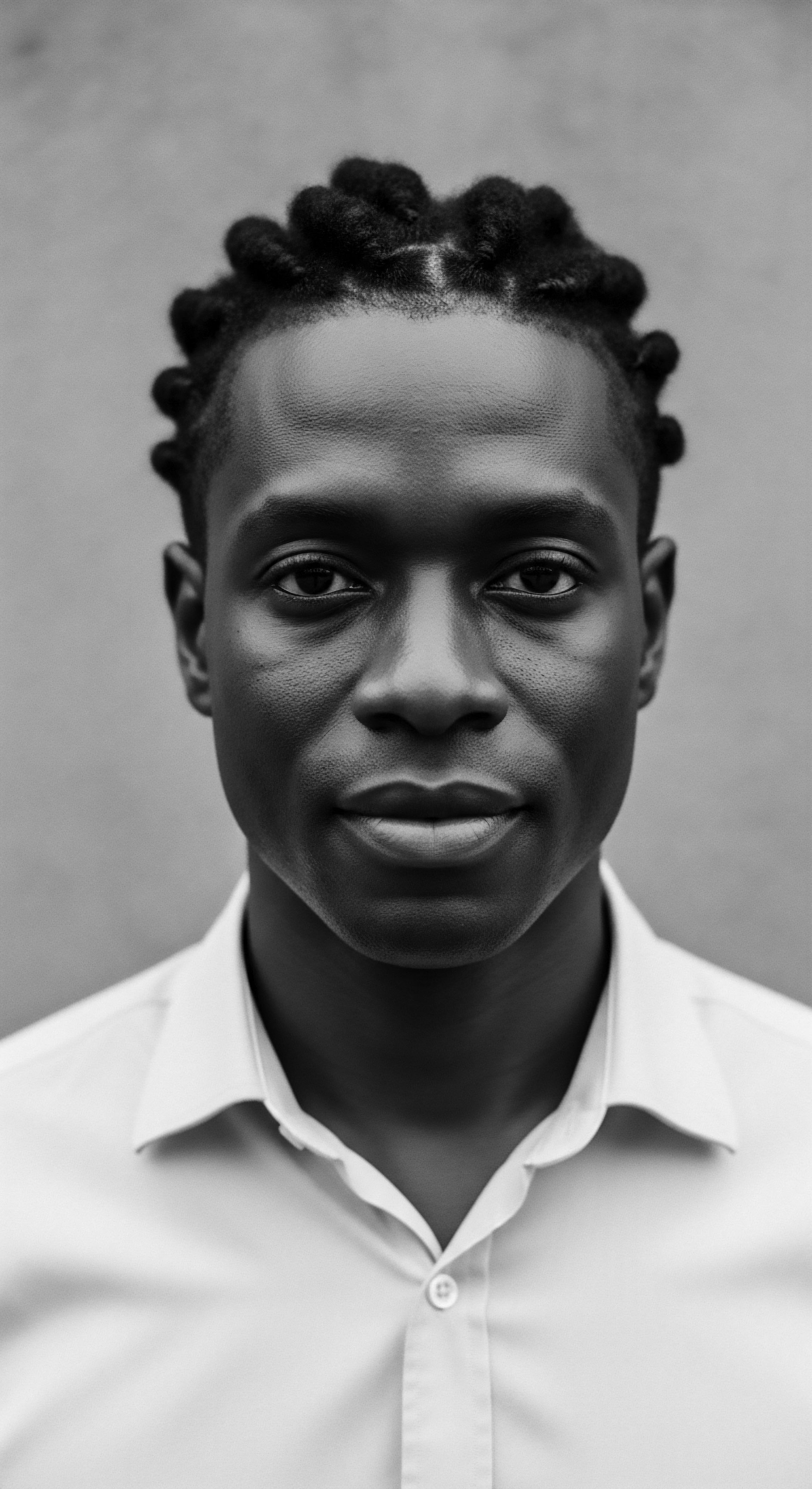
Relay
The enduring legacy of ancestral oils reaches across generations, informing modern textured hair care with a wisdom that is both ancient and perpetually relevant. The relay of this knowledge is not a static transmission; it is a dynamic continuity, adapting to new challenges while holding fast to its heritage. In the contemporary world, where textured hair often faces multifaceted environmental stressors, the principles and potent properties of these traditional oils stand as beacons for holistic care and effective problem-solving.
The environment presents a complex array of challenges to hair vitality. Beyond the obvious drying effects of sun and wind, airborne pollutants from urban environments, such as smoke, dust, particulate matter, and harmful gasses like nitrogen oxides (NOx) and volatile organic compounds (VOCs), settle on the hair and scalp. This accumulation can lead to dryness, breakage, clogged hair follicles, scalp irritation, and even premature thinning. UV radiation, particularly UVA and UVB rays, directly attacks hair proteins and melanin, leading to structural damage, loss of strength, and color fade.
Even variations in humidity, from arid dryness to excessive moisture, can impact hair health, causing brittleness or frizz. In this complex landscape, the protective and hydrating mechanisms of ancestral oils become not just traditional remedies, but scientifically defensible solutions.

What Specific Properties of Ancestral Oils Provide Environmental Shielding?
The effectiveness of ancestral oils in shielding textured hair from environmental stressors lies in their unique biochemical compositions, offering both occlusive and antioxidant properties.
Many ancestral oils possess significant occlusive properties , meaning they form a physical barrier on the hair surface, sealing the cuticle and preventing moisture loss from evaporation. This is particularly valuable for textured hair, which, due to its structural characteristics, is prone to dehydration. Oils like castor oil and shea butter , with their thicker consistencies and high fatty acid content, excel in creating this protective film. This barrier not only locks in hydration but also physically hinders the adhesion of airborne pollutants to the hair shaft, preventing them from infiltrating and causing damage.
Beyond physical occlusion, many ancestral oils are rich in antioxidants and other beneficial compounds that combat oxidative stress caused by environmental aggressors. UV radiation and pollutants generate free radicals, which can degrade hair proteins and pigments. Oils containing compounds such as tocopherols (Vitamin E), polyphenols, and various fatty acids can neutralize these damaging free radicals.
- Sesame Oil ❉ Contains endogenous antioxidants like sesamolinol and sesaminol, showing significant in vivo antioxidant activity and reducing UV-induced damage.
- Avocado Oil ❉ Rich in antioxidants, it helps reduce oxidative stress and aids in moisture retention.
- Almond Oil ❉ Its fatty acids can help protect against UV radiation-induced structural damage and act as an emollient to soften hair.
- Marula Oil ❉ From Southern Africa, it is known for being high in antioxidants, offering skin rejuvenation and hydration, properties that extend to hair protection.
The combination of occlusive action and antioxidant defense means these oils do double duty ❉ they keep the hair hydrated from within and protect it from damage from without. This dual action makes them highly effective defenses against the cumulative effects of daily environmental exposure.
The efficacy of ancestral oils in safeguarding textured hair stems from their ability to create a physical barrier while simultaneously providing antioxidant defense against environmental harm.
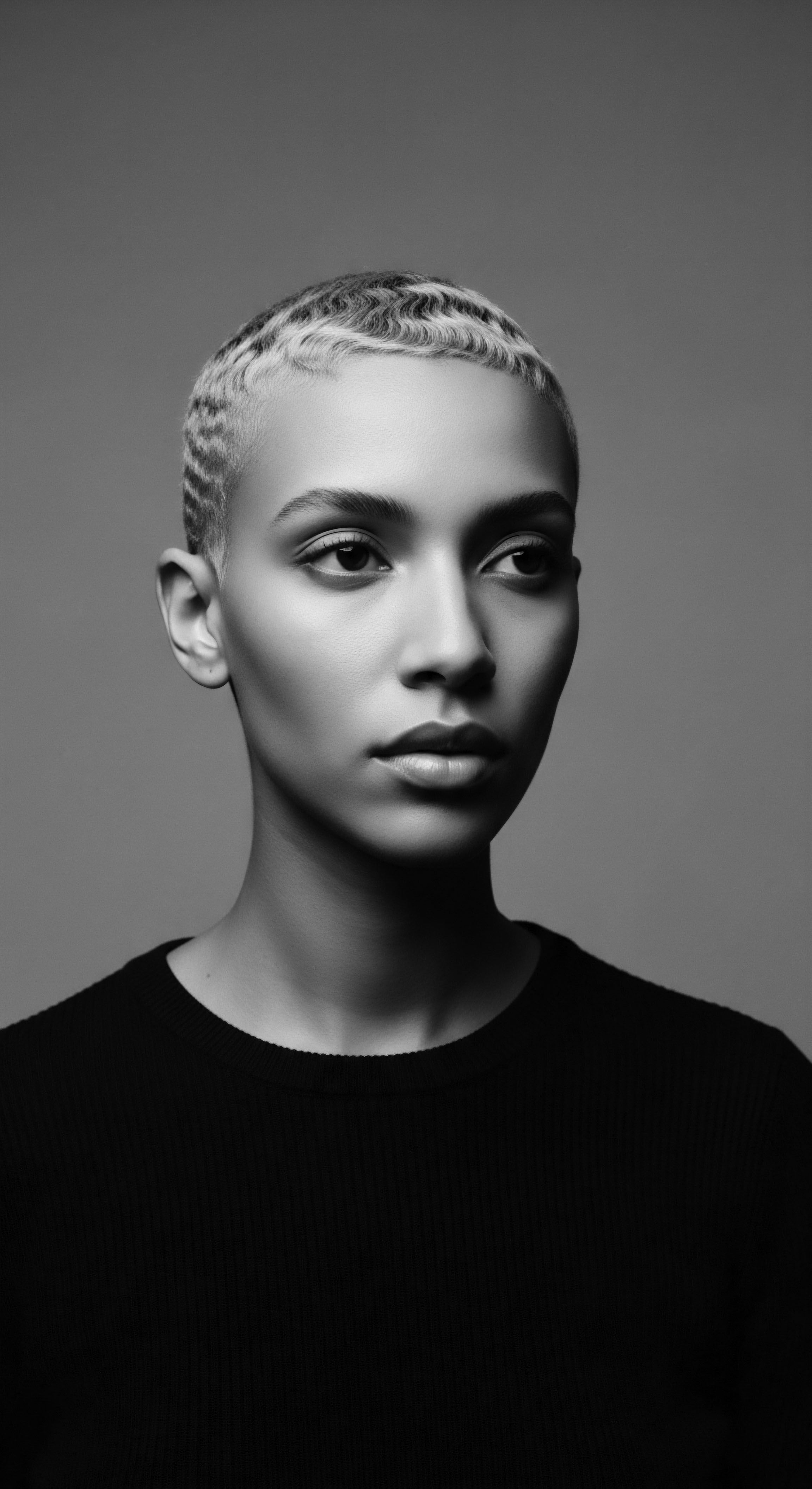
Holistic Influences on Hair Health Through Ancestral Wisdom
The wisdom embedded in ancestral hair care extends beyond the chemical properties of oils to a holistic understanding of wellbeing. Hair health was, and is, often viewed as an extension of overall physical and spiritual health. This holistic view is particularly apparent in traditional wellness systems where hair oiling is not merely a cosmetic practice but a therapeutic ritual.
For instance, in Ayurvedic traditions from India, where coconut oil and sesame oil are prominent, hair oiling is a key component of maintaining balance between the body, mind, and spirit. The act of massaging warm oil into the scalp is believed to promote blood circulation, reduce stress, and soothe tension, creating a healthy foundation for hair growth and vitality. This approach links hair care directly to mental and emotional states, acknowledging that stress and internal imbalances can manifest in hair issues.
Similarly, in many African communities, hair rituals were deeply tied to community, identity, and spirituality. The careful application of oils and butters was part of practices that symbolized social status, life stages, or tribal affiliation. This communal aspect, with shared stories and wisdom, underscored the importance of self-care within a broader collective context. It taught patience, respect for natural resources, and the value of continuity across generations.
This integrated approach means that ancestral oils were not just “products” but agents within a larger framework of mindful living and collective care. The deep hydration and protection they provided were outcomes of a continuous, purposeful engagement with both the physical strand and its spiritual and cultural context.

Nighttime Sanctuary for Textured Strands
The hours of rest offer an optimal window for profound hair restoration, a truth long understood by our forebears. The nighttime sanctuary for textured hair, guarded by a ritual of careful oiling and protective coverings, represents a profound ancestral wisdom. Sleep protection , most notably through the use of bonnets and head wraps, found deep roots in African and diasporic practices, driven by both necessity and a celebration of aesthetic.
These coverings reduced friction against rough sleep surfaces, preserving delicate hair structures and preventing moisture loss from strands. The smooth surfaces of silk or satin head coverings, a modern adaptation of traditional wraps, align perfectly with the objective of minimizing mechanical stress on the cuticle.
The application of ancestral oils as part of a bedtime routine further amplifies protection. A gentle massage of a lighter oil , such as jojoba oil or sweet almond oil , into the scalp and along the hair lengths provides continuous nourishment and a barrier against overnight dehydration. For coarser strands, a richer oil like shea butter or castor oil at the ends can provide a sealing layer, preventing split ends and reinforcing the hair’s external defense. This consistent nighttime care, a quiet act of devotion to one’s strands, serves to fortify the hair against the cumulative daily stressors it encounters.
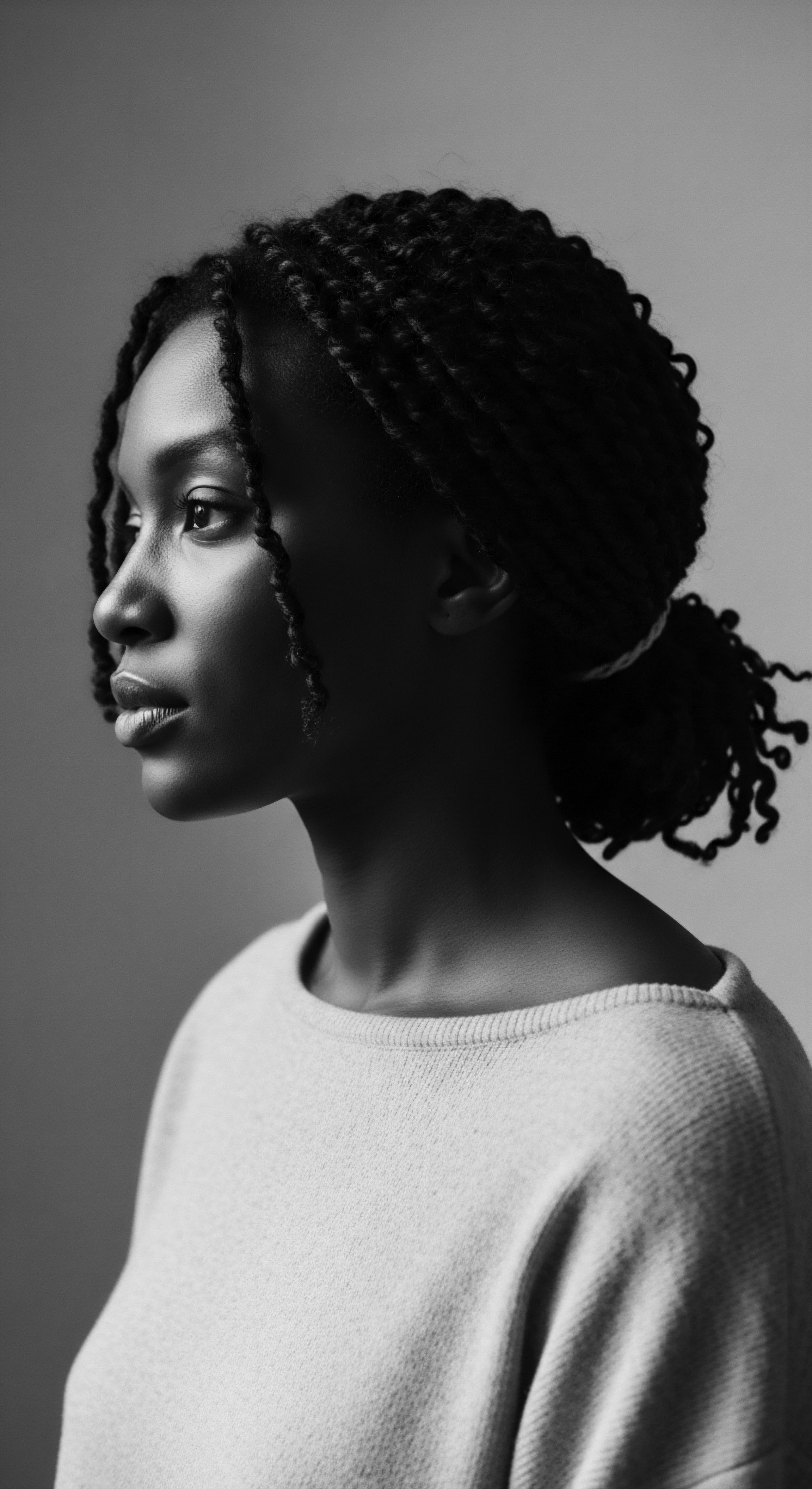
Reflection
Our exploration of ancestral oils and their role in hydrating and shielding textured hair from environmental aggressors has been a journey through time, a quiet contemplation of enduring wisdom. We have seen how the scientific understandings of today—of cuticle scales, lipid barriers, and oxidative stress—often stand in resonant agreement with practices honed over countless generations. The knowledge of which plants yield the most effective elixirs, the meticulous rituals of preparation and application, and the profound cultural meanings woven into every strand of hair are a testament to an ingenuity that adapted and thrived across diverse landscapes.
Textured hair, with its unique biological blueprint and rich historical context, has always been a focal point of care and cultural expression within Black and mixed-race communities. The very act of tending to it with ancestral oils, whether the occlusive richness of shea butter against dry winds or the cuticle-penetrating depth of coconut oil for strength, is more than a beauty regimen. It is a dialogue with the past, a living legacy that speaks to resilience, adaptability, and the profound connection between the self, community, and the gifts of the earth. These oils are not simply ingredients; they are anchors to a heritage, a quiet strength passed down, ensuring that the soul of a strand remains hydrated, protected, and honored, always.

References
- Maclean, A. (2021). Hair Care Practices from the Diaspora ❉ A Look at Africa, America, and Europe.
- Nori, M. (2021). Impact of Environmental Stressors on Hair. NYSCC.
- Rele, J. S. & Mohile, R. B. (2003). Effect of mineral oil, sunflower oil, and coconut oil on prevention of hair damage. Journal of Cosmetic Science, 54(2), 175-192.
- Gavazzoni Dias, M. F. R. (2015). Hair Cosmetics ❉ An Overview. International Journal of Trichology, 7(1), 2–15.
- Burnett, D. C. et al. (2021). Hair Oils ❉ Indigenous Knowledge Revisited. Pharmaceutical Medicine, 35(1), 1-10.
- Ali, M. & Wahid, F. (2017). Ethnobotanical uses of traditional plants for hair care in Pakistan. Journal of Ethnopharmacology, 203, 31-45.
- Nath, S. et al. (2023). Reviving Ancient Hair Rituals ❉ Exploring the Therapeutic Art of Hair-Oiling. Clinikally.
- Adnan, S. et al. (2024). Traditional Indigenous Haircare ❉ Ancient Wisdom for Modern Hair Concerns.
- Dube, T. A. (2019). Heavy is the Head ❉ Evolution of African Hair in America from the 17th c. to the 20th c. Library of Congress.
- Green, S. & Green, B. (2025). The Power of Hair in African Folklore ❉ Rituals and Traditions. Bebrų Kosmetika.
- Ramchurn, S. (2025). From Ancient Egypt to Modern Beauty ❉ Timeless Cosmetic Secrets. Egyptra Travel Services.
- Hanna, S. (2012). The secret of ancient Egyptian beauty. Arab News.
